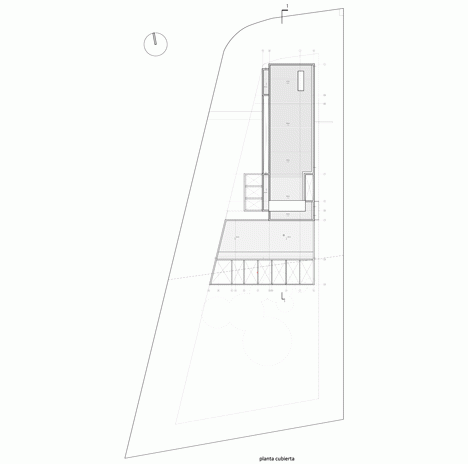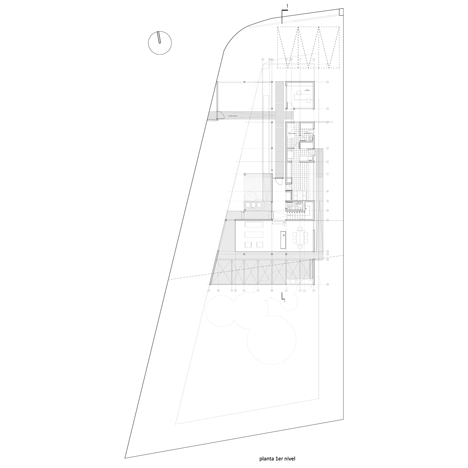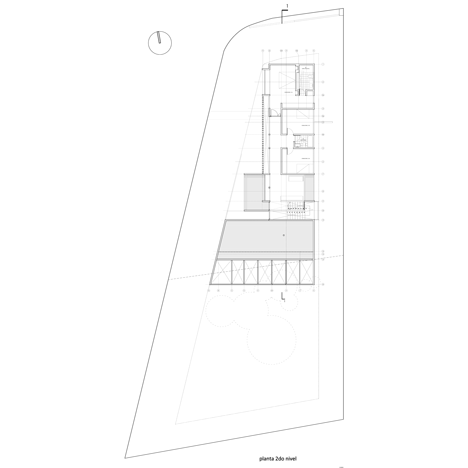GB House is supported by steel pillars to avoid disturbing its hilltop site
A large decked balcony raised on branching steel piloti provides views towards the Pacific Ocean from this house near the Chilean city of Concón by Santiago studio emA Arquitectos.
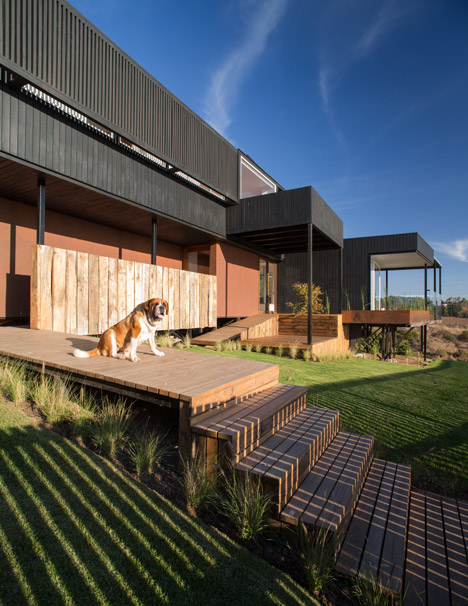
GB House was designed by emA Arquitectos for a family who wanted to move out of the capital and enjoy a quieter life by the coast. The plot is located on the edge of the village of Mantagua, in a wetland nature reserve that provides opportunities for kayaking, hiking and bird watching.
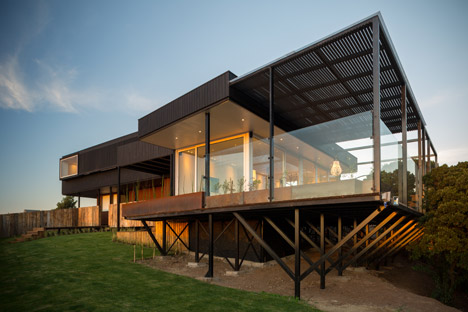
The property's position on the outskirts of the village, in an area defined by steep gorges, means it feels isolated and is not overlooked by other properties. The brief called for a family home with a separate office where the client could work and hold meetings for his construction business.
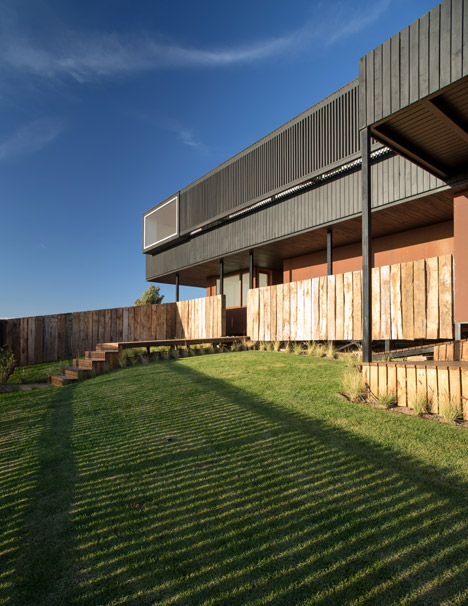
The terrain of the plot informed the building's position and orientation, with the living areas situated at the steepest point to ensure these spaces have the best views across the nearby dunes towards the sea.
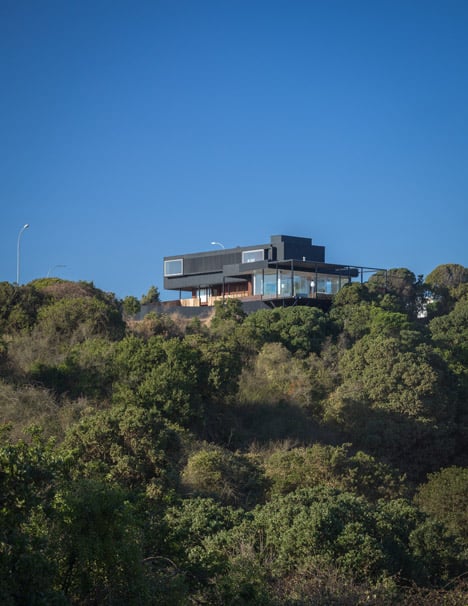
The owner's small office is situated at the rear of the ground floor, in a volume separated from the main house by a void that passes below the timber-clad upper storey.
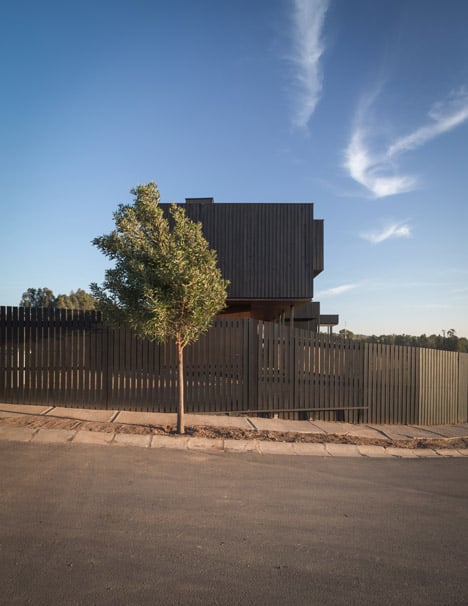
"The design of this house respects the topography of the site and the perimeter made up of native vegetation," architect Orlando Etcheberrigaray told Dezeen. "It seeks to isolate itself from the rest of the houses in the sector, by placing the volume in such a way that its location releases and extends views towards the coast."
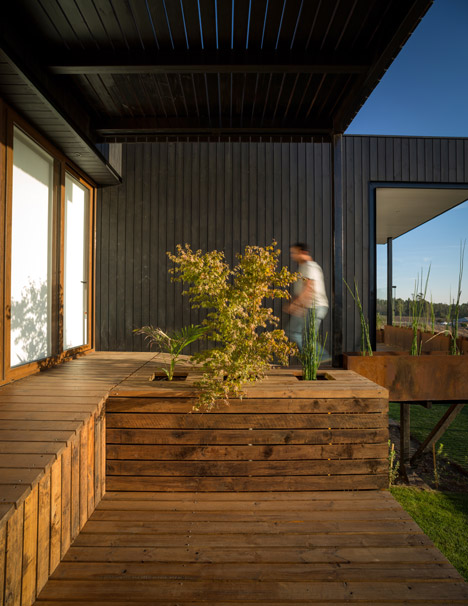
The entire building is raised above the ground on steel supports to minimise disruption to existing native plants, which are free to grow underneath the building. A decked terrace that wraps around the lounge and dining area is supported by branching pillars that rise from the steep slope at the front of the plot.

"We took into consideration the local vegetation of the place and trying not to intervene the natural terrain," added Etcheberrigaray, whose firm has also completed a small oak-clad house in Chile. "For these reasons the house was designed on piloti and with gangways that connect the access with the house and exterior office."
The gangways extend along either side of the house, connecting the terraces with a porch area on one side that incorporates a raised plant bed and a ramp descending to the garden.
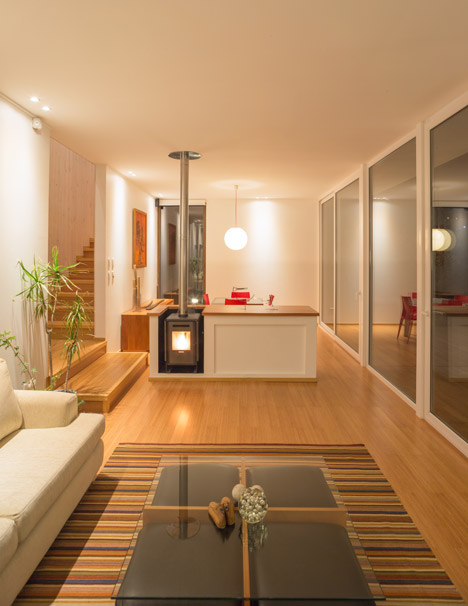
One of the gangways leads from the front gate to the opening between the house and office. It continues to the house's entrance, which opens onto a corridor flanked by the kitchen.

The corridor culminates in a step down to the living and dining area, which is lined with full-height glazed walls incorporating sliding sections that open onto the decking outside.
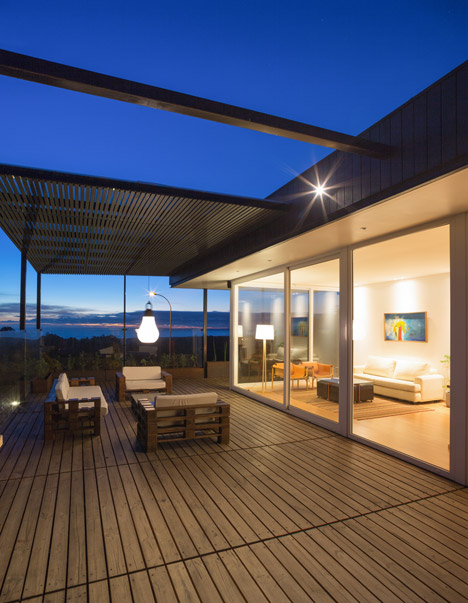
A timber staircase ascends to a small sitting and study area on the first floor landing, from which a corridor leading towards the rear of the property connects with the three bedrooms on this level.
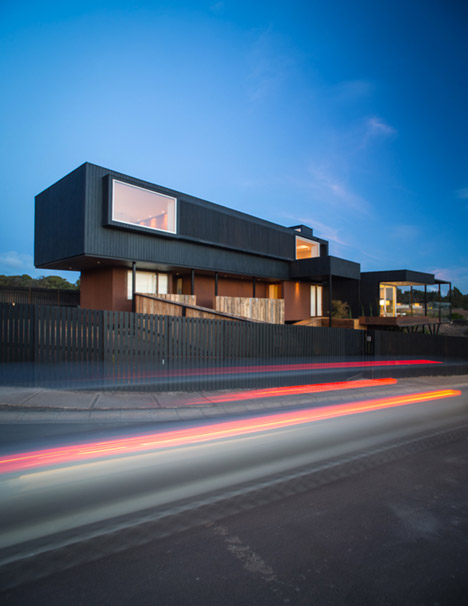
The architects applied black-painted timber cladding to the exterior of the first floor and weathered steel on the ground floor to contrast with the pale wood used throughout the interior.
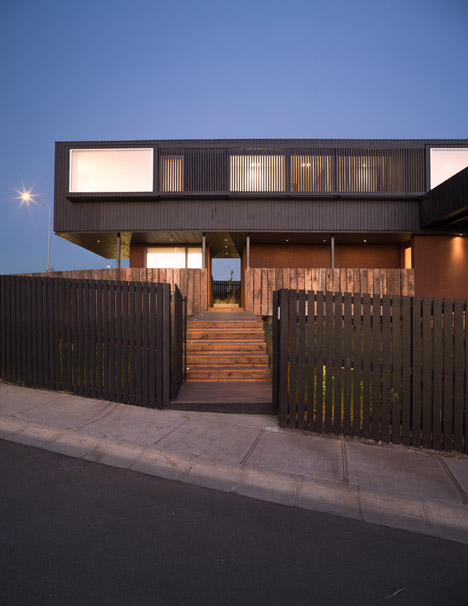
The topography of Chile's dramatic coastline has been exploited by many of the country's architects, who often position houses on the clifftops or raise them off the ground to gain better views of the Pacific. Mas Fernandez Arquitectos, LAND Arquitectos and L2C have all designed recent examples.
Photography is by Marcelo Cáceres.
